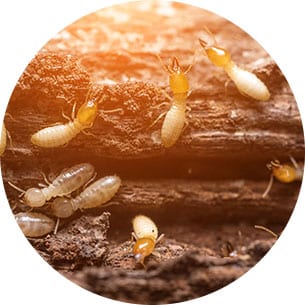Timber pest inspections are a critical aspect of maintaining your Adelaide property and ensuring its long-term stability and value. Pests like termites and borers cause millions of dollars in damage to Australian homes each year, and early identification and remediation are crucial to prevent extensive and costly damage to your property.
In this essential guide, we’ll take you through the world of timber pest inspections and help you understand why they are so important, the potential warning signs to watch for, and how engaging the expert services of Precise Building Inspections can safeguard your home investment.
1. Common Timber Pests in Adelaide: Types and Damage
Understanding the different types of timber pests found in Adelaide properties and the damage they can cause is vital to maintaining your home’s structural integrity. The most common timber pests include:
– Termites: Responsible for over 70% of timber damage in Australian homes, these insects consume cellulose in wood, weakening structures and causing significant damage over time.
– Wood borers: These insects, such as beetles, lay their eggs in timber, and their larvae consume the wood, creating tunnels that impact structural stability.
– Wood decay fungi: This type of fungus breaks down the timber’s cellulose, causing the wood to lose its strength and become prone to decay.
By recognising the potential threats these pests pose, you can take steps to prevent infestations and safeguard your home.
2. Identifying Signs of Timber Pest Infestations
Timely identification of timber pest infestations is key to minimising damage to your property. Here are some warning signs to watch for:
– Mud tubes or trails: Termites use these tubes to travel while staying protected from predators and maintaining humidity.
– Hollow-sounding timber: This may indicate an infestation, as timber pests consume wood from the inside out.
– Sagging floors, ceilings, or walls: Structural damage caused by pests weakening the timber can result in these issues.
– Discoloured wood or paint: Changes in the wood’s appearance, such as fading or bubbling paint, may be due to pest infestations or moisture issues.
– Crumbling or damaged timber: Damaged or crumbling wood, particularly around windows, doorframes, or skirting boards, could signify infestation.
By monitoring your property for these signs, you can detect potential infestations early and take swift action.
3. Frequency and Circumstances for Timber Pest Inspections
Regular timber pest inspections are vital to ensure the ongoing health and value of your property. Here are the recommended guidelines for timber pest inspections:
– Annual inspections: It’s widely advised to conduct a professional timber pest inspection at least once a year to identify and manage potential infestations.
– Upon buying a property: A pre-purchase inspection should include a thorough timber pest inspection to identify any existing issues and inform your purchasing decision.
– Pre-renovation or extension: Assessing timber for pests before commencing construction work can save you from costly surprises during the process.
– Noticeable warning signs: If you observe any of the previously mentioned warning signs around your property, schedule a professional inspection as soon as possible.
Following these guidelines will help you maintain your property’s structural integrity and protect its market value.
4. Selecting a Qualified Inspector for Your Timber Pest Inspection Needs
To ensure your Adelaide property receives a thorough and accurate assessment, it’s essential to choose a qualified and experienced timber pest inspector. Here are some tips to help you find the right professional for your needs:
– Check for qualifications: Ensure the inspector holds a pest management technician licence and has experience in timber pest inspections.
– Verify expertise in Adelaide: A local inspector will be familiar with the area’s common pests and the best methods for detecting and managing infestations.
– Read reviews and ask for references: Testimonials from previous clients can provide valuable insights into the inspector’s professionalism, expertise, and communication skills.
– Review sample inspection reports: A clear, comprehensive, and well-structured report will make it easier to understand the findings and take appropriate action.
By choosing a professional like Precise Building Inspections, you can be confident your timber pest inspection will be meticulous and efficient.
5. Responding to Timber Pest Infestations
If a timber pest infestation is detected, taking swift and informed action is crucial to minimise damage and protect your property. Some recommended steps include:
– Obtain a quote for treatment: Obtain a detailed and itemised quote from reputable pest control professionals outlining the necessary treatment and prevention measures.
– Ensure correct licensing: The pest control company should have appropriate licensing and insurance coverage to ensure safe and effective treatment.
– Follow recommended advice: Adhere to your pest control professional’s advice on post-treatment upkeep and ongoing management of your property to avoid future issues.
By taking these steps, you can effectively address timber pest infestations and maintain your property’s integrity and value.
Conclusion
Understanding the importance of timber pest inspections in Adelaide is essential to safeguard your property investment and maintain its structural health. By learning about common pests, recognising warning signs, and seeking out experienced professionals like Precise Building Inspections, you can protect your home from the potentially devastating impacts of timber pest infestations. Don’t wait for the damage to occur – schedule your professional timber pest inspection today!




